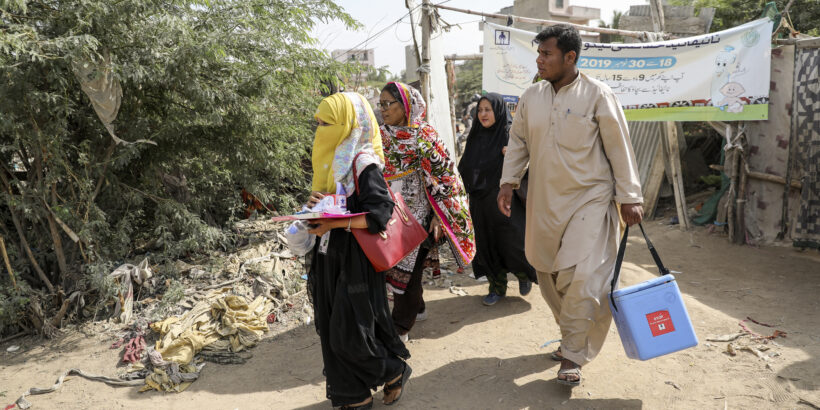Typhoid can cause serious short- and long-term complications if left untreated. The risk of complications underscores the importance of prompt treatment following proper diagnosis, as well as the need to prioritize prevention. Appropriate antibiotics are the only effective way to treat typhoid, though supportive measures such as oral or intravenous hydration, blood transfusions, and surgery may be required depending on the severity of disease and presence of complications such as intestinal perforation or bleeding.
Appropriate antibiotics
Appropriate antibiotic stewardship—administering the correct drug, dosage, and length of treatment—is key to treating typhoid with minimal complications. Depending on the antibiotic used, treatment lasts between 5 and 21 days. The traditional first-line antibiotics for treatment of typhoid are chloramphenicol, ampicillin, and cotrimoxazole. However, typhoid strains resistant to these first-line antibiotics, commonly referred to as multidrug-resistant typhoid (MDR), has been seen since the 1970s.
Fluoroquinolones are now widely regarded as the optimal treatment for typhoid because they clear symptoms more rapidly than the first-line antibiotics and have very low rates of post-treatment carriage, meaning that it is less likely for a patient to continue spreading the disease following completion of treatment. These drugs are inexpensive, widely available, and generally well tolerated in both adults and children. Unfortunately, research shows that in high-burden communities, resistance to fluoroquinolones—along with the first-line antibiotics—is becoming increasingly common. This forces the use of newer, more expensive, and less readily available antibiotics, including third-generation cephalosporins and azithromycin. Typhoid has evolved to resist even these antibiotics, giving rise to extensively-drug resistant typhoid (XDR) strains.
Increasing drug resistance places great pressure on public health systems in low- and middle-income countries that may not be able to afford or acquire these medicines. When these second-line antibiotics are unavailable, MDR typhoid becomes untreatable. As treatment becomes more difficult, the need for increased access to preventative measures, such as vaccines and improvements in water, sanitation, and hygiene becomes more urgent.
Expanding coverage of typhoid conjugate vaccines (TCVs) through routine immunization can reduce the need for antibiotics, slow further emergence of drug-resistant typhoid strains, and save lives. Multiple modeling analyses project that TCV introduction can drastically reduce the number of drug-resistant typhoid cases and deaths. TCV introduction with catch up campaigns is projected to decrease the proportion of typhoid cases that are drug-resistant by more than 16% in Gavi, the Vaccine Alliance-eligible countries over ten years. Additionally, on average, two-thirds of cases and deaths due to fluoroquinolone resistant- and multidrug-resistant typhoid could be averted through TCV introduction in these countries. Furthermore, TCVs are forecasted to be one of the most impactful vaccines for preventing drug-resistance-associated deaths. TCVs could prevent 28,700 drug-resistance-associated deaths each year in children younger than 15 years old.
Photo: TyVAC/Asad Zaidi.



